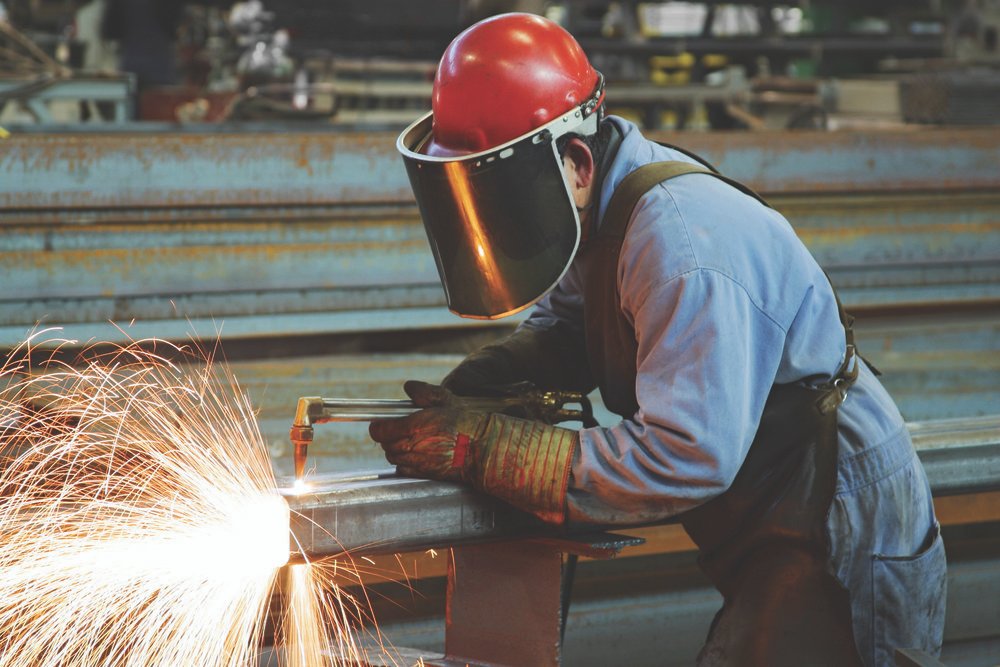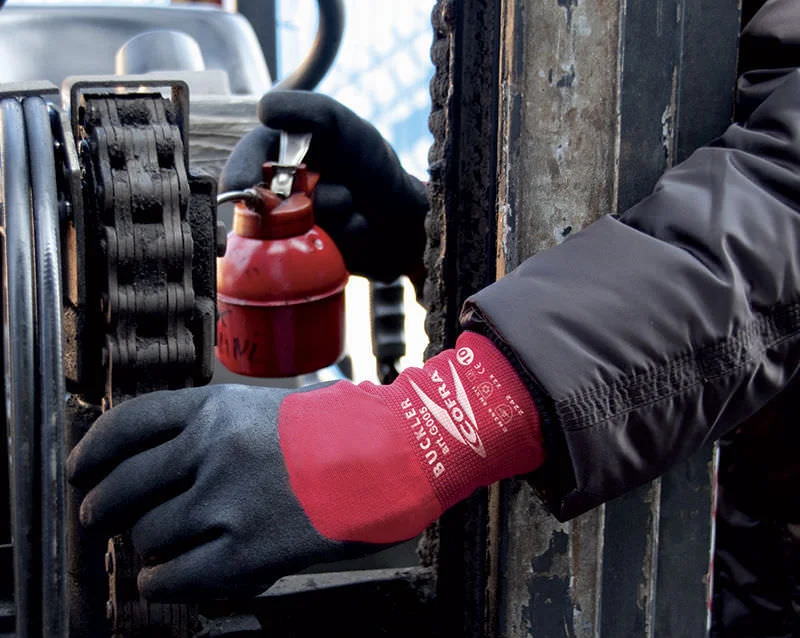
Q: What kind of gloves are best for stick welding?
A: Welding presents various hazards, many of which specifically put the welder’s hands at risk. According to guidelines from both OSHA and ANSI, gloves used for any type of welding must protect the hands from the follow six hazard categories:
- Electric shock (using non-conductive materials)
- Heat
- Burns
- Fires
- Ultraviolet radiation
- Cuts, scrapes, and impact
For stick welding, gloves should be flame-resistant, kept in good repair, dry, and capable of preventing electric shock from welding equipment.
(Read about how to choose the right safety gloves 12 types of hand-protection gloves .)
Depending on the specific task, a glove with built-in protection for the back of the hand may be required, such as a pad or protector. Different seasons may also call for different gloves, as a summer welding glove may not be suitable for work outdoors during the winter, for example. It’s also important to consider whether the gloves you intend to use have design features (such as reflective strips) that could potentially catch and hold sparks or cause hot spots or burns.
As welding is often performed in inclement weather (rain, snow, fog, high humidity, or damp), gloves must be made of non-conductive materials.
(Learn more in controlling-hazardous-fume-and-gases-during-welding/.)
Make sure you look for gloves that meet the legislated requirements. If your welders are contractors who supply their own PPE, your company should have standards in place that require them to meet regulations, standards, and codes, as well as any company rules that are outlined in your own policy and procedures.
In order for workers to actually use the gloves effectively, they need to not only be compliant, but also comfortable, warm, able to wick away sweat, and well-fitted. One size does not fit all, as a welder has to be able to do several tasks, including:
- Raise and lower the welding helmet or helmet shield
- Use a hand-held welding shield
- Use a chipping hammer, electric grinder, air tool, or impact chisel
- Use the “stinger” and clamp and un-clamp the ground
- Handle a welding rod
- Use clamps, locking pliers, vise-grips, and other small hand tools
- Mark work with chalk or crayon-style marking sticks
- Move jigs or move the work on jigs or welding tables, machinery, or pipe
- Maneuver work into position and add or insert pieces of metal into position (gussets, tabs, braces, plates, etc.)
Overall , welding gloves are a critical part of the PPE ensemble required for this type of work. A comprehensive hazard analysis is required before choosing a particular product, and the ones that came in the box when you bought the welding machine may not meet all the needs your exact analysis requires.
There are great manufacturers and distributors out there. Spend some time researching their products, and consider involving the welder that has to use what you buy in the selection process.
Lastly, remember that welding gloves, like any other PPE, require training in their use, inspection and care.
Other Recent Questions
- Free Download Common Firefighter Job Interview Questions and Answers
- High Rise Fire Safety Questions and Answers
- Scaffold Safety self Audit and checklist
- HSE Interview Questions and Answers for Oil and Gas
- Q& A: Which is better Cast Iron or concrete counterweight in the tower crane? and What is the purpose of a counterweight?
- Top 154 Safety Interview Questions and Answers for successful
- Online Quiz: Top 13 Industrial Safety Objectives Questions
- Q&A: What Does Fire Load Mean? and How do you calculate it?
- HSE Interview Questioners
- Q & A: Do Manual Hoists and Trolleys Require a Load Test after Installation?
- Safety Record keeping
- Is Magnetic Particle Testing required by an OSHA or ASME standard?
- What is the difference between fall protection and fall prevention
- Conventional or Addressable Fire Alarm System?
- Online Quiz: Personal Protective Equipment (PPE)
- 68 HSE Interview Questions
- Online Quiz: Work and home fire safety
- Q & A: What is the Difference between Process shutdown and Emergency Shutdown?
- Interview Questions on Fire Alarm System
- Online Quiz: lightning Safety
- Q & A: What happens if I tie off at the foot level with a personal SRL?
- E-Books: Book of Questions and Answers Safety Health
- Q & A: What kind of gloves are best for stick welding?
- Q & A: Does anyone other than equipment operators need to be trained in lockout/Tagout?
- Work-Related Stress short guide
- How many wheel chocks do should I use per trailer?
- How is wind chill calculated?
- How do cooling towels work?
- What’s an efficient way to account for everyone in the event of an on-site emergency?
- Who should be responsible for rescuing fallen workers?
- When should workers use polarized safety glasses?
- Q & A: What PPE should I use when working at home?
- Q & A: What are the Types of scaffold’s load?
- Coronavirus disease (COVID-19) Questions & Answers
- What procedure should we follow to reactivate equipment that has been locked out?
- What are some of the guidelines around using back support belts in the workplace?
- What is the difference between a hazard and a risk?
- Are nitrile gloves safe?
- Bump Testing Gas Detector 6 Important Questions
- Online Quiz:The Lab Safety Symbols
- Can you wear any pair of earmuffs with a hard hat?
- Online Quiz:Health and Safety Signs
- Online Quiz:Personal Protective Equipment (PPE)
- Online Quiz:Construction Safety -Excavation
- What is Meaning of %LEL , %UEL , PID
- Online Quiz:Ladder safety, Test your self
- Online Quiz:Electrical safety, Test your self
- Fall Protection Systems Quiz Test Your Knowledge
- What is the general safety Rules and apply to whom?
- What can we do about rain protection for arc flash work?
- What is a self-retracting fall protection device?
- What is the difference between primary and secondary spill containment?
- How does dehydration impact workplace safety?
- What is the difference between safety goggles and glasses?
- Safety interview Questions and Answers Part 2
- Safety interview Questions and Answers Part 1



